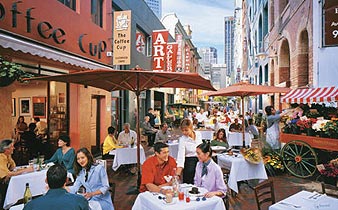Melbourne Typesetting Service for Arabic

If you have an InDesign file that requires translation from English to Arabic or from Arabic to English, we can translate and typeset the translation for you within the InDesign files. Besides InDesign files, we accept Illustrator, Photoshop, Powerpoint or any other popular file format.
For larger files, you may use file-sending services such as yousendit.com or wetransfer.com.
Choose our Arabic Typesetters
- Typesetting of Arabic text by experienced Arabic typesetters
- Huge range of foreign language software and fonts by our Arabic typesetters
- Output to your desired format
Use this form to attach your files and send to us for a free quote.
Arabic Translation and Typesetting
Where a program cannot directly take the fonts of a particular language, typesetting is normally completed in Illustrator and placed back in the original design file as curved EPS files. We have considerable experience in larger multi-language typesetting projects where a consistent design and feel must be produced across several languages. This involves the coordination of Asian and European font styles, point sizes, leading, etc.
We provide professinal brochure translation and typesetting services no matter where you are based, contact us for a free quote.
More About The Arabic Language
Arabic is a name applied to the descendants of the Classical Arabic language of the 6th century CE. This includes both the literary language and the spoken Arabic varieties.
The literary language is called Modern Standard Arabic or Literary Arabic. It is currently the only official form of Arabic, used in most written documents as well as in formal spoken occasions, such as lectures and news broadcasts. In 1912, Moroccan Arabic was official in Morocco for some time, before Morocco joined the Arab League.
The spoken Arabic varieties are spoken in a wide arc of territory stretching across the Middle East and North Africa. The modern written language (Modern Standard Arabic) is derived from the language of the Quran (known as Classical Arabic or Quranic Arabic). It is widely taught in schools, universities, and used to varying degrees in workplaces, government and the media. The two formal varieties are grouped together as Literary Arabic, which is the official language of 26 states and the liturgical language of Islam. Modern Standard Arabic largely follows the grammatical standards of Quranic Arabic and uses much of the same vocabulary. However, it has discarded some grammatical constructions and vocabulary that no longer have any counterpoint in the spoken varieties, and adopted certain new constructions and vocabulary from the spoken varieties. Much of the new vocabulary is used to denote concepts that have arisen in the post-Quranic era, especially in modern times.
Arabic is the only surviving member of the Old North Arabian dialect group, attested in Pre-Islamic Arabic inscriptions dating back to the 4th century. Arabic is written with the Arabic alphabet, which is an abjad script, and is written from right-to-left. Although, the spoken varieties are often written in ASCII Latin with no standardized forms.
Arabic Typesetter in Melbourne

Melbourne is the capital and most populous city in the state of Victoria, and the second most populous city in Australia. The Melbourne City Centre is the hub of the greater metropolitan area and the Census statistical division—of which "Melbourne" is the common name. As of June 2010, the greater geographical area had an approximate population of four million. Inhabitants of Melbourne are called Melburnians or Melbournians.
The metropolis is located on the large natural bay known as Port Phillip, with the city centre positioned at the estuary of the Yarra River (at the northernmost point of the bay). The metropolitan area then extends south from the city centre, along the eastern and western shorelines of Port Phillip, and expands into the hinterland. The city centre is situated in the municipality known as the City of Melbourne, and the metropolitan area consists of a further 30 municipalities.
Melbourne was founded in 1835 (47 years after the European settlement of Australia) by settlers from Launceston in Van Diemen's Land. It was named by governor Richard Bourke in 1837, in honour of the British Prime Minister of the day, William Lamb—the 2nd Viscount Melbourne. Melbourne was officially declared a city by Queen Victoria in 1847. In 1851, it became the capital city of the newly created colony of Victoria. During the Victorian gold rush of the 1850s, it was transformed into one of the world's largest and wealthiest cities. After the federation of Australia in 1901, it then served as the interim seat of government of the newly created nation of Australia until 1927.
Often referred to as the "cultural capital of Australia", Melbourne is the birthplace of cultural institutions such as Australian film (as well as the world's first feature film), Australian television, Australian rules football, the Australian impressionist art movement (known as the Heidelberg School) and Australian dance styles such as New Vogue and the Melbourne Shuffle. It is also a major centre for contemporary and traditional Australian music.1

